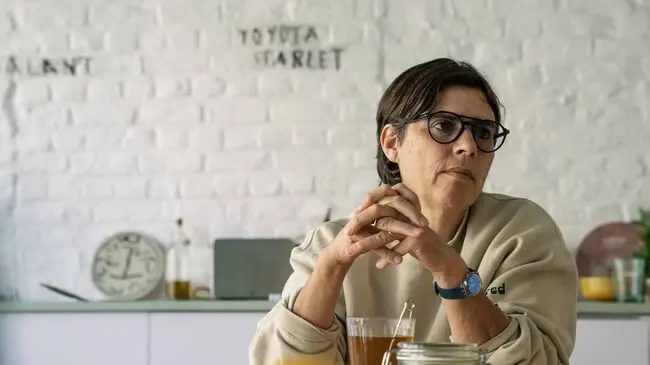Aforementioned Aphorisms

‘Aforementioned Aphorisms’ recalls the encounter with the Antwerp-based artist Dodi Espinosa when visiting Shilpa Gupta’s solo exhibition Today Will End in MuHKA. Rather than following the classical, one-on-one, Q&A interview format, this text follows the sensory trajectory through an immersive and critical exhibition. The written walk is pervaded with citations of poems, which are included in the work For, in your tongue, I cannot fit, and references to titles of other works that are presented in the exhibition. ‘Aforementioned Aphorisms’ mainly describes the experience of the second space in the exhibition (with exception of the first space as a source of sound and the third space as an invisible entity) and therefore leaves an openness towards the overall perception of Today Will End and the associative links to Dodi Espinosa’s practice and perspective in the format of recitations, allusions, and aphorisms.
trtrtrtrtrtrtrtrtrtrtrtrtr trtrtrtrtr trtrtrtrtrtrtrtr trtrtrtrtrtrtrtrtrtrtrt trtrtrtrtrtr
“My only audience
Silence
HUANG XIANG
DETAINED: 1958, 1965, 1979”
is printed on one of hundred pierced pieces of paper.
We cannot enter, as the lights darkened by technical default. We cannot see For, in your tongue, I cannot fit[1]. We cannot hear the microphones chant verses, unless in the dark[2]. But can we speak?
Silence is broken by a Singing Cloud[3] and the rattling of a motion flapboard, echoing from another darkened space.
trtrtrtrtrtrtrtrtrtrtrtrtr trtrtrtrtr trtrtrtrtrtrtrtr trtrtrtrtrtrtrtrtrtrtrt trtrtrtrtrtr
When Words Come From Ears[4], our conversation sets off. Dodi Espinosa utters his consternation to the guard. The red fenced border withholds us from access to the facing dark void. We still cannot see the hundred poems of For, in your tongue, I cannot fit, of which the aforementioned first lines of this text are Espinosa’s favourite ones within his favourite work of Shilpa Gupta’s exhibition. We still cannot hear the choir of hundred microphones. Chanted verses of detained poets, unseen and unheard and unspoken. My imagination revolves in the rhythm of the rattling boards. The continuous
trtrtrtrtrtrtrtrtrtrtrtrtr trtrtrtrtr trtrtrtrtrtrtrtr trtrtrtrtrtrtrtrtrtrtrt trtrtrtrtrtr
reverbs through the white spaces as museal mantras, spelling mystaces, drumming vodou.
(T)here is a red border, unlike Untitled (There is No Border Here)[5].
Espinosa speaks and his words come to my ears. The invisible, imaginary space traces visible imagery in the other space. Drawings behind bars, objects disguised in jute, luckily There is No Explosive in This[6], even though there is a reddened cabinet filled with Blame[7].
trtrtrtrtrtrtrtrtrtrtrtrtr trtrtrtrtr trtrtrtrtrtrtrtr trtrtrtrtrtrtrtrtrtrtrt trtrtrtrtrtr
Gupta engages with the public (sphere), approaching and activating both serial objects as a participatory practice, the first by walking around with suitcases which are adorned with the aphorementioned There is No Explosive in This, reversing the stereotypical notion of border control and terrorism in a tangible, suggestive manner (since the (un)masked objects were withheld at the customs). The second by distributing red bottles filled with Blame amongst passersby in the public realm of trains and shopping malls, therefore addressing the universal sense of guilt over the borders of identity and religion. Both actions intervene in the hierarchical order of power relations and the ruling reign of civilian control and censorship by altering the safe voyeuristic stance of the artist towards an activ(ist)e and collective stakeholder of the artistic production within a societal reality. Both displayed oeuvres remain as muted and unheard relics, respectively on three anatomical tables and in a clinical red-hued shrine-like cabinet.
Silence returns like A Liquid, the Mouth Froze[8].
Espinosa meanders through the space, like liquids always find their path trtrtrtrtrtrtrtrtrtrtrtrtr trtrtrtrtr trtrtrtrtrtrtrtr trtrtrtrtrtrtrtrtrtrtrt trtrtrtrtrtr
to the essence of earthly gravitas. We stand eye to eye with two of three whitened female busts. Each figure is covering the eyes/ears/mouth of the neighboring persona, resulting in a collective, embracing constellation. Espinosa attributes the face as an autoportrait of the artist. ‘I look at things with eyes different from yours’[9], I say, since the trinity of busts -in my gaze- resembles a bunch of ballerinas. The scenery reminds me of Espinosa’s sculpture El Dia del burro\[10]\(Donkey’s Day), a three-legged ballerina who is disguised as the four-legged donkey, or, on the other hand, the problematic, objectifying, and voyeuristic gaze of Degas’ sculptures... Too far fetched, crossed the bordertrtrtrtrtrtrtrtrtrtrtrtrtr trtrtrtrtr trtrtrtrtrtrtrtr trtrtrtrtrtrtrtrtrtrtrt trtrtrtrtrtr
El dia del Burro - Dodi Espinosa
‘Dance your anger and your joys
Dance the military guns to silence
Dance their dumb laws to the dump
And there is an Ogoni Star in the Sky
KEN SARO-WIWA
DETAINED: 1994’
Untitled (Don't See, Don't Hear, Don't Speak)[11] stems from a Japanese saying that was popularized by Mahatma Gandhi, although the work speaks about freedom of speech and the reoccurring reiteration of separatism in Gupta’s homeland in India, where borderlines become peripheral and enclaves become imprisoned. The sensory perception of Untitled (Don't See, Don't Hear, Don't Speak) recalls Espinosa’s work Vox Populi, which resonates with the muted statement of the three-legged, entangled figures. Vox Populi[12] consists of a bombardon with its horn mounted on a wall, ultimately blocking the auditive waves to abandon the instrument. The mouthpiece faces a metal plate that encapsulates the words ‘VOX POPULI’ (the voice of the people), ultimately unspoken and unheard. Don’t see censorship, don’t hear freedom of speech, don't speak unless you can improve the silence[13].
Vox Populi - Dodi Espinosa
Silence.
We speak.
‘It is very difficult to create this sculpture on a technical level,’ Espinosa expresses when admiring the three don’ts. The sculptor resurrects since we talk about the sculptural statute. Sculpture as the medial motive to disguise a myriad of personal mythologies, associative accumulations of interwoven, intellectual patterns and a research of transhistorical referential resources. The object an sich doesn’t benefit from aesthetics, composition, or colour, but on the contrary, embodies a chiastic channelling of imaging impetus and gestural genesis. Rough, edged and/or blunt. Coloured clay.
trtrtrtrtrtrtrtrtrtrtrtrtr trtrtrtrtr trtrtrtrtrtrtrtr trtrtrtrtrtrtrtrtrtrtrt trtrtrtrtrtr
‘How much longer will you
stay hidden behind a clay statue?
NAZRUL
DETAINED: 1922’
We also talk about gallerists and Chinese coins. When I ask Espinosa how the pandemic panic influenced the latest evolutions of his practice, we end up discussing zen culture in relation to visual arts. Espinosa lately explores the meditative fields of consciousness, evolving into new zones of zen imagery. We talk about the ‘speaking wall’[14] and the endurance, focus, and concentration which is needed for cultivating zen-mediation. Espinosa wanders how figurative representation of humanimals is redirected along the freeing paths of zen.
Banana Republic (2 variations) - Dodi Espinosa
‘Che Guevara, we too have our mountains,
Che Guevara, we too have our people here
Che Guevara, we too have our poets
For Vietnam is our Vietnam
Congo is our Congo
Che Guevara, we too have our mountains
METIN DEMIRTAS
DETAINED: 1968’
Espinosa’s series of silkscreen prints, titled Banana Republic[15], abstracts and layers segments of Che Guevara’s stylized cult-portrait until it reaches the statute of a military-like, banana-coloured camouflage print. This project will evolve soon into a collaboration with a fashion designer in order to designate the pattern as wearable textile work. We talk about the problematic alternation of a revolutionary Marxist into commercialized capital and the subsequent Threat[16] trtrtrtrtrtrtrtrtrtrtrtrtr trtrtrtrtr trtrtrtrtrtrtrtr trtrtrtrtrtrtrtrtrtrtrt trtrtrtrtrtr of historiographical reception and misconception as this cultural and political metamorphose is globally popularized and massively exploited, parallel to the colonial coup on the aforementioned yellow fruit by monopolistic companies.
Last but not least, I ask if ‘Dodi Espinosa’ is a pseudonym or artist name, according to Gupta’s Someone Else – A Library of 100 Books Written Anonymously or Under Pseudonyms[17]. ‘Dodi’ came into being due to his little brother’s habit of calling him with the aforementioned autobiographical alter ego.
On my way to my red car, I pass by a window that offers a view of the interior of a doctor's waiting room. Although the curtains block a major part of the glass transparency, I can still decipher the lower bodies of three sculpted monkeys. The heads and arms of the animals are unseen, but are they also unheard and unspoken?
The day ends, and Today Will End[18].
[1] S.G., Sound installation, 100 speakers, microphones, printed text, metal stands, variable dimensions, 2017 - 2018
[2] The first exhibition of Shilpa Gupta’s works that I ever saw was called Drawing in the Dark and took place at KIOSK, Ghent (BE) in 2017
[3] S.G., Object built with thousands of microphones with 48 multichannel audio, 152.4x457.2x61 cm, audio: 00:09:30, 2008 - 2009
[4] S.G., Motion flapboard, 43x244x13 cm, 15 min loop, 2018
[5] S.G., Self-adhesive tape, variable dimensions, 2005 - 2006
[6] S.G., Mixed media, variable dimensions, 2007 - 2011
[7] S.G., Glass bottles, fake blood, posters, stickers, video, 00:01:49, 300x130x340 cm, 2002 - 2004
[8] S.G., Cast of an open mouth in gunmetal, etched brass plate, 17.5x11x18.5 cm, 2018
[9] S.G., Print on mirror, embroidered curtain, metal rod, 147x104x12.5 cm, 2010
[10] D.E., Painted Clay, fabric, papier mache, jute, gold leaf, 2018
[11] S.G., Polymer resin, wood, 134,5x84x92 cm, 2017 - 2018
[12] D.E., Bombardon, metal plate, 2016
[13] ‘Don't talk unless you can improve the silence’ is a quote by Jorge Luis Borges.
[14] S.G., LCD screen, bricks, headphone, 00:08:00, 300x300x300 cm, 2009 - 2010
[15] D.E., Silkscreen prints, 2020
[16] S.G., 4500 Soaps, 72x229x107 cm, 2008 - 2009
[17] S.G., Stainless steel, 100 etched books, 488x22x190 cm, 2011
[18] S.G., Neon, 600x95 cm, 2012. Furthermore the title of Shilpa Gupta’s exhibition. This text only describes one space of Today Will End.
Different Class works with the interest of their community at heart.
Our work’s purpose is to foster a solid network for independent artists, those who love them, and those who want to support them. Become a member to contribute to the local Belgian art scene.





